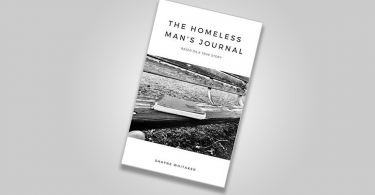Dunham is the ‘real girl’ doing a round of the block. She’s got issues, is a little overweight and verges on dysfunctional at times. These facts alone make her an object of the media’s fascination. By having famous parents, a skill for writing and a hit HBO show she leaves the world’s jaws dropping to the floor. After breaking barriers about sex and ideas about what the average 20-something year old gets up to in Girls, Dunham is out to shatter even more taboos. Her new book, Not That Kind of Girl, is the ideal mixture of sex and self-pity.
You’ll cry, laugh and cringe
Like her character, Hannah, Lena’s own life is full of horrible sex stories. The reader is left simultaneously laughing, crying and cringing on her behalf. This sounds like an odd response, but it’s the desired one. As the book is an autobiography/memoir, it intends to show a journey. And boy does she take one! To get to the ‘today’ which for Lena consists of a stable boyfriend (Jack Antanoff) and a flourishing career she’s had to survive many long ‘yesterdays’.
Her ‘yesterdays’ range in severity from discovering, to her slight disappointment, that she’s in fact far from a lesbian. to the day of her beloved grandma’s death. Lena’s childhood was, while on the surface normal and pleasant, a very disturbing one and, as she ventures into it, the term ‘character building’ springs to mind. She proves herself to be a prime example of when issues inside one’s mind can lead them to developing a strong and well articulated voice.
A self-confessed hypochondriac she tumbles through life popping pill after pill. Mostly prescribed. We are told she worries about anorexia. Not due to lack of appetite, but to the danger it poses on society. While this could be a representation of weight pressures of society on young girls, it could also just be an element of Lena’s self-obsessive personality. Even a disease she hasn’t encountered she attempts to claim as her own. She suffers from OCD and we see an anxiety-ridden young girl face her demons in the form of germs and food she doesn’t know the origin of.
A more challenging issue
Despite covering her anxiety issues and the OCD and general phobias associated with it Lena goes on to cover a much more challenging issue. She recounts, as she does many times, the tale of a previous lover. However in the case of ‘Barry, the college republican, it’s less a comical lack of sexual experience but more his actions which take resonance with the reader.
“I tell him to look away. I pull down my tights to pee, and he jams a few of his fingers inside me, like he’s trying to plug me up. I’m not sure whether I can’t stop it or I don’t want to.” It’s hard to read. The words conjure a lump in my throat and I find my facial muscles dropping sympathetically as I think ‘poor, poor girl’. The innocence in a 19 year old trusting, and some may say having the naivety, to trust your average Joe makes the latter even more shocking.
Lena tells of the self-blaming that follows. She writes how she feels “ like there are fifty ways it’s my fault…But I also know that at no moment did I consent to being handled that way.” A natural response one may say, although when she tells her best friend Audrey of the affair, and Audrey names it rape, Lena erupts in laughter. It’s interesting to see the girl who’s cried wolf her whole life, looking for issues to fret over, finally avoid the very real trauma which were as real as the Xanax and cocaine she took that night.
Lena talks of her therapy like it’s an old friend. There’s a certain degree of comfort, reliance and reassurance in her relationship with therapy. Could it be she just likes to hear the sound of her own voice? Regardless of whether or not she really needs it, an amusing and heart-jerking anecdote is shared in which the therapist shegrew to love’s daughter becomes her best friend. As well as therapy, her work is an integral part of who she is. Lena speaks of her love of what she does in a way that encourages young hopefuls to perceiver.
Small faults
As a Dunham fan girl, it pains me slightly to admit the book did have slight faults. Granted- it’s funny, sad and personal as hell but the structure offers issues for me. Whether it’s that it is a collection of essays or the complete lack of chronology, there seems to be no flowing narrative. The link is Lena and interesting as she is, it makes for a choppy read. The use of lists and hypothetical emails also bored me a little. They appeared simply as fillers, leading one to believe she’s being paid by the word and has run out of inspiration.
People will compare it to Caitlin Moran’s latest novel, How to Build a Girl. This is no accident. The two books follow a tried and tested formula of talking about an embarrassing upbringing and sexual endeavors in horrifying detail, collated by a funny, quirky narrator. No wonder my two girl-crushes are doing a show together this October in London. I just hope Lena and Caitlin maintain their lack of reservation and make the audience feel immensely uncomfortable. I mean come on, this is feminism in its finest form after all.
Image Source: YayA Lee/Flickr (Jamie McCarthy/Getty Images)








